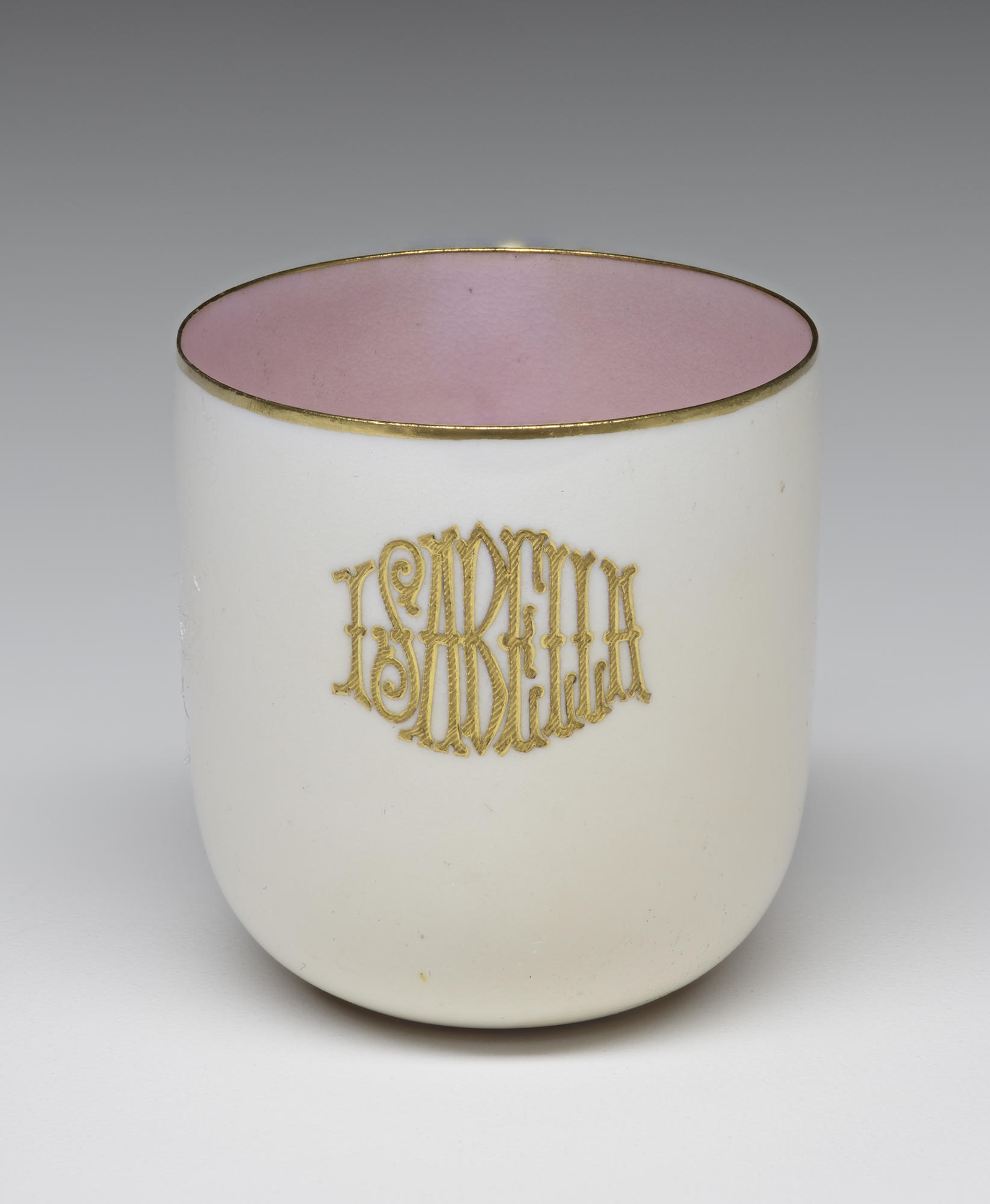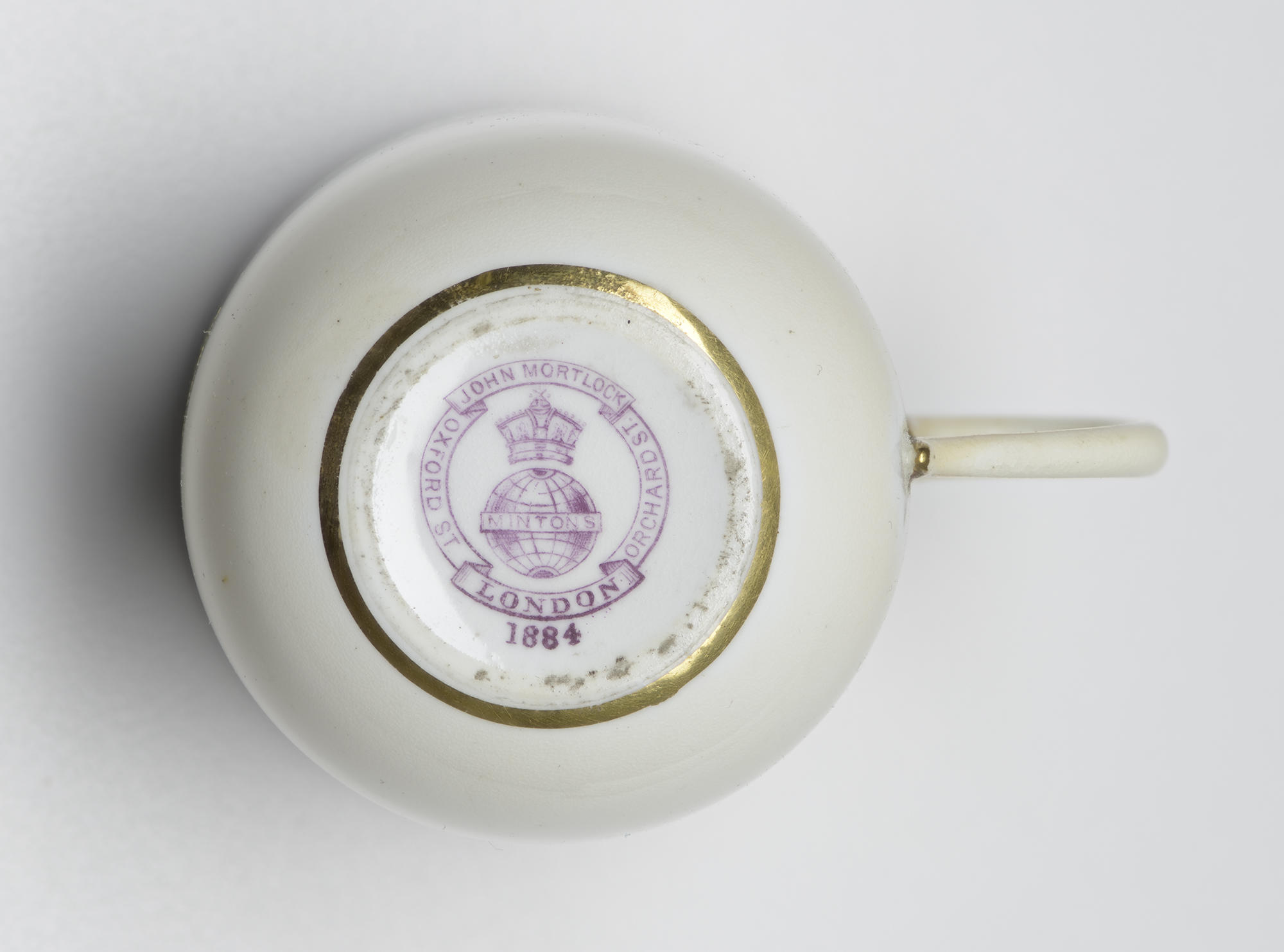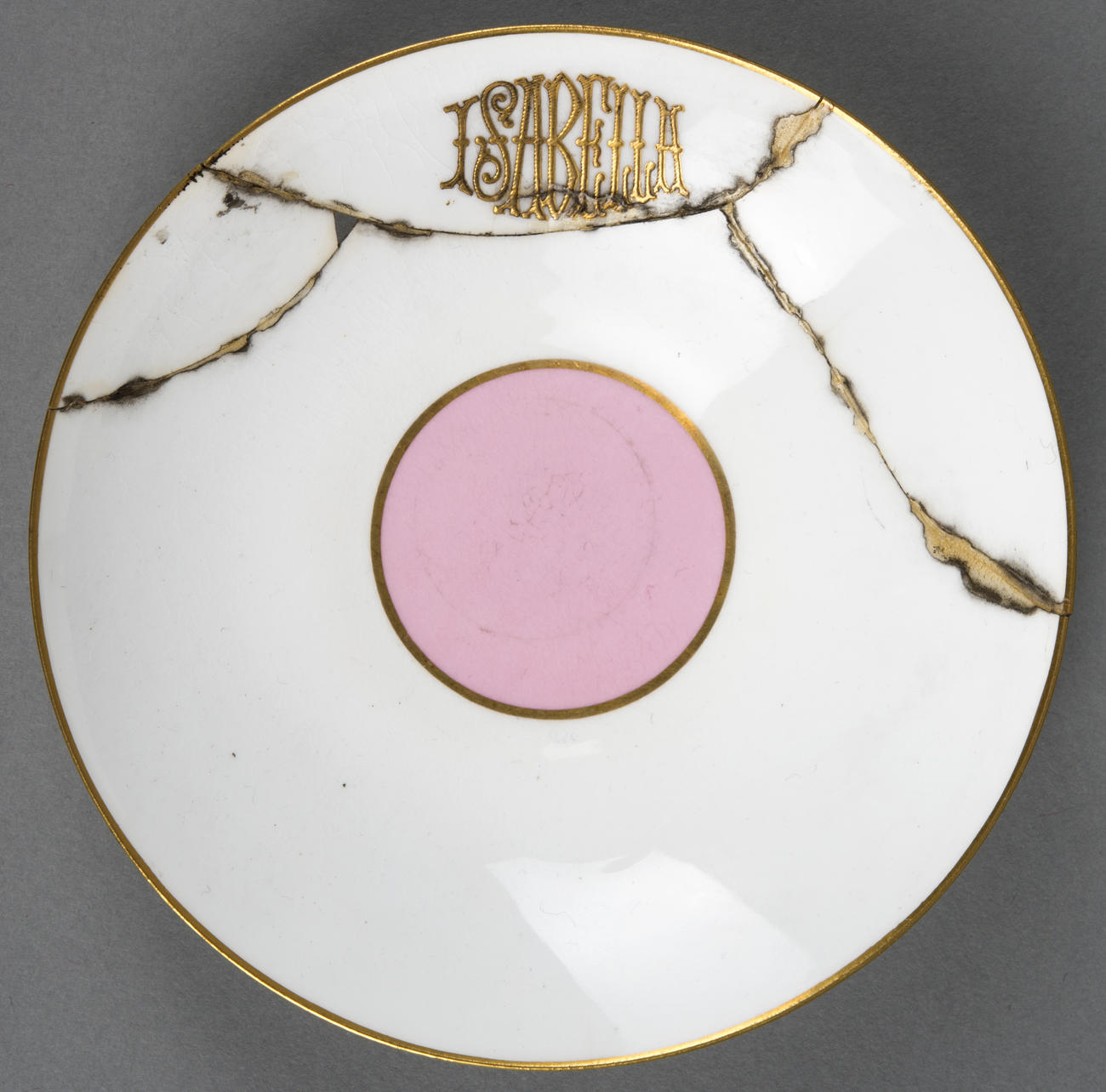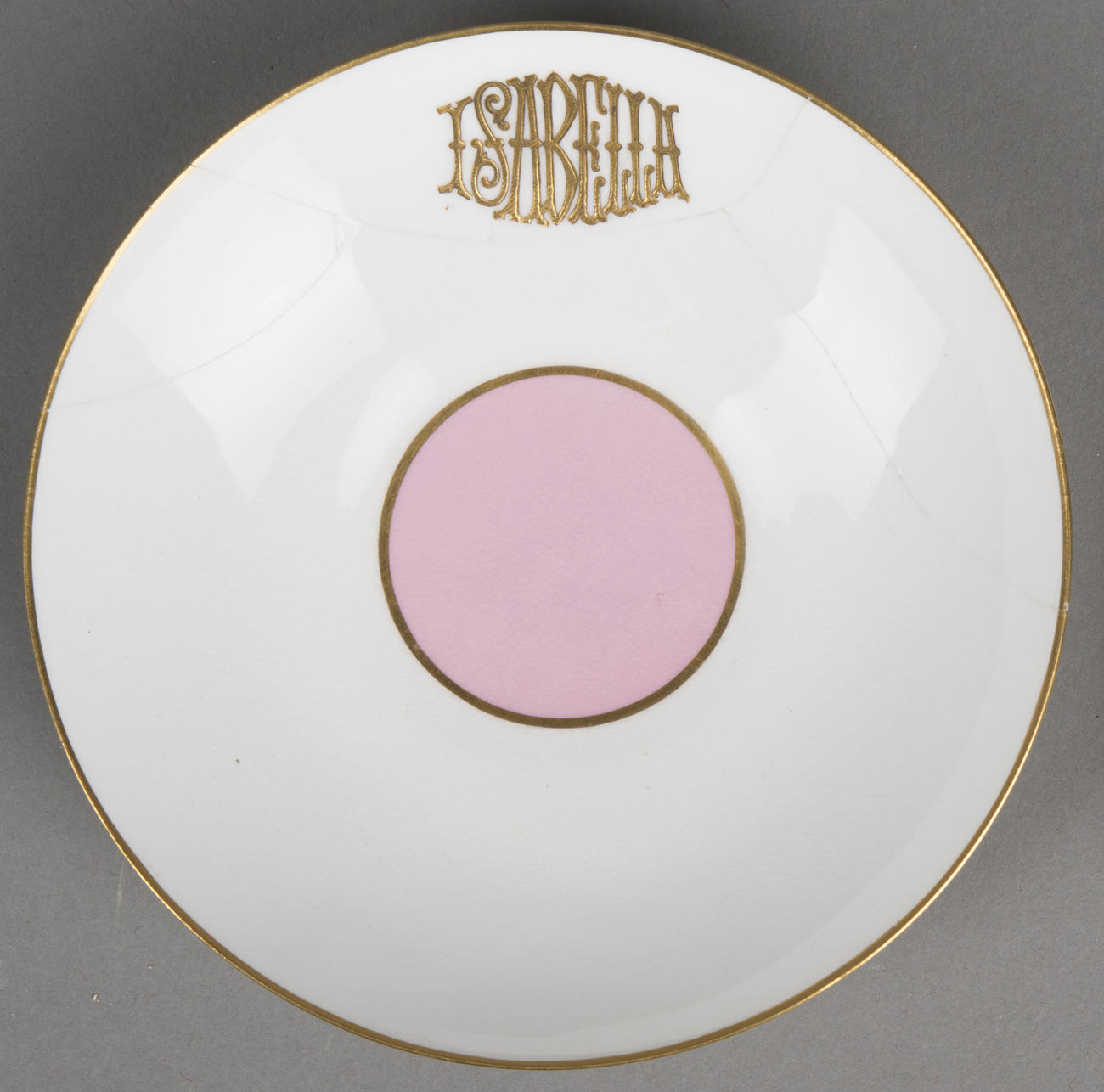Peeking out from the back of the Vatichino is an extremely delicate pink and white Cup and Saucer, embellished with the name “Isabella” in raised gold letters.

Minton Ceramics Manufactory (British, established 1796), Cup and Saucer, 1884
The cup and saucer were made in 1884 at Mintons Ceramic Manufactory in England. The eggshell-thin body is a material called bone china, which is made from kaolin, feldsparic materials, and bone ash. These ingredients created a white, translucent, and hard material similar to Chinese hard-paste porcelain.
There is a stamp on the bottom of the cup and saucer depicting a crowned globe with the name "MINTONS" across the center.

Retailer's mark on the bottom of the cup and saucer
This is encircled by a ribbon marked with “JOHN MORTLOCK/OXFORD ST, ORCHARD ST/LONDON.” Below, is the date “1884.” A page from an 1884 estimate book from the Stoke-on-Trent City Archives shows the entry for Isabella Stewart Gardner’s cup and saucer.
Photo: Stoke-on-Trent City Archives, SD 1705/MS1445
Estimate book from the Stoke-on-Trent City Archives showing the entry for the "Isabella" cup and saucer
The entry describes, “Isabella in raised & chased gold…” and “J Mor.” which indicates the retailer was John Mortlock. Mortlock was one of the most prominent retailers of fine china in London in the early 19th century, so an object bearing the Mortlock stamp indicates high quality.
The cup and saucer were examined and treated by the Conservation Department in preparation for the installation of the Vatichino in 2019. The condition of the cup was all right, but not pristine. It was dusty, the glaze had a network of fine cracks, and there was uniform, light yellow staining—likely because it was used for drinking tea, coffee, or other beverages. By contrast, the saucer had seen more damage in its time than the cup. A note in Museum records stated, “Saucer broken and repaired (1932?).”
Indeed, the saucer was broken into four pieces and had been repaired with an adhesive that had become brittle and yellow with age. A significant amount of dirt had accumulated along the repaired joins, and a small triangular-shaped piece had chipped off and was missing.
The first treatment step was to reduce the extra adhesive on the saucer. Luckily, we were easily able to dissolve the adhesive with acetone, a chemical best-known for being used as nail polish remover. Next, the repaired pieces of the saucer were taken apart so that the dirt and old adhesive could be cleaned from the break edges. This kind of cleaning demands many steps, and can almost seem like a medical procedure. We soaked cotton in acetone to create poultices (something people have used to treat soreness and other ailments.) These poultices were placed along the join lines, and the saucer was sealed inside a plastic bag to create a kind of vapor chamber, filled with the acetone evaporating from the poultices.
In a short amount of time, the four pieces of the saucer easily came apart and the rest of the adhesive was cleaned off with acetone-soaked cotton swabs. The break edges still had embedded dirt and yellow staining that needed to be carefully cleaned in another multi-stage process, involving special gel and diluted hydrogen peroxide. With the saucer’s break edges as clean as possible, the four pieces were meticulously reattached one-by-one, using a clear, stable, and easily reversible acrylic resin called Paraloid B-72. Even the missing triangular-shaped piece was filled with an acrylic gel made to match the color and shine of the rest of the saucer.
Before and after treatment of the saucer, 2018 and 2019
After these many hours of work, Isabella's cup and saucer are back on display—look for this beautiful little object the next time you visit the first-floor Vatichino gallery and think about its long journey to its current condition!




